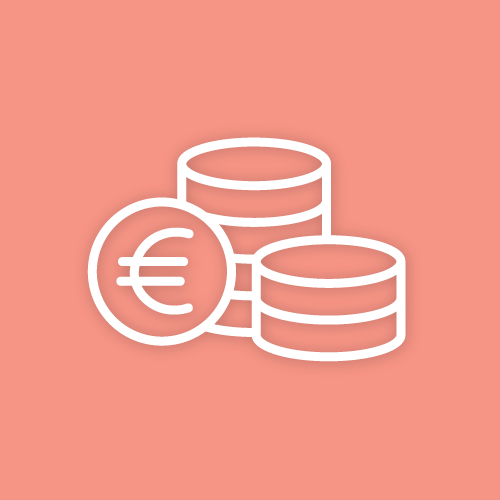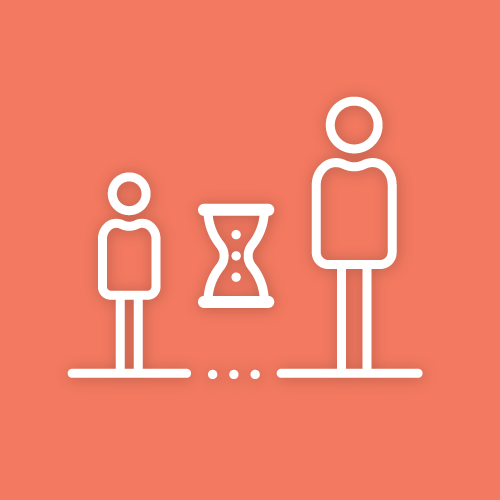Overview
The European Cancer Inequalities Registry puts forward an EU-wide framework to monitor disparities and report on trends in key cancer prevention and care at regional, national and EU level. Since the aim of the Registry is to monitor the whole continuum of the cancer pathway, the four pillars of Europe’s Beating Cancer Plan – prevention; early detection; diagnosis and treatment; quality of life – are at the core of the assessment framework. Additionally, epidemiological measures of cancer burden are included.
These pillars, or thematic dimensions are assessed from the perspective of different inequalities, ranging from disparities between countries and regions, to inequalities due to age, sex, as well as socioeconomic disparities.
Thematic dimensions
-
PreventionBetween 30% and 50% of cancer cases in the EU are preventable, according to the World Health Organisation. The risk of cancer can be reduced by following healthy lifestyles, maintaining a healthy diet, being physically active and refraining from alcohol and tobacco consumption. Environmental factors like exposure to air pollution, various carcinogenic chemicals and radiation, as well as some infections, also play an important role in cancer development.
-
Early detectionEarly detection through screening offers the best chance of beating cancer and saving lives. However, progress in implementing population-based screening programmes and participation in those programmes differ across Europe and population groups.
-
Diagnosis and treatmentDisparities in the access to high-quality cancer care, particularly for timely diagnosis and treatment, persist across the EU. Various factors impact the quality of cancer care a patient receives, as well as their chances of survival, including their age, sex, stage at which the cancer was diagnosed, place of residence and level of education and income.
-
Quality of lifeThanks to early detection and new technologies for cancer treatment, survival rates have greatly increased in the EU. However, people from lower socio-economic backgrounds are still more likely to die from cancer or less likely to enjoy a good quality of life as cancer survivors.
-
Cancer burdenThere are important disparities in mortality, incidence and prevalence rates across Europe and across different population groups. It is one of the main aims of all policy interventions to reduce these inequalities and to lower the overall burden of cancer.
Inequality dimensions
 Inequalities by countryGeographical inequalities persist between European countries and regions, in regard to cancer burden, prevention, screening and care.
Inequalities by countryGeographical inequalities persist between European countries and regions, in regard to cancer burden, prevention, screening and care. Inequalities by sexCancer affects men and women in different ways. While some cancers develop only or more often in one sex, there are also inequalities in terms of cancer prevention, screening and diagnosis between sexes.
Inequalities by sexCancer affects men and women in different ways. While some cancers develop only or more often in one sex, there are also inequalities in terms of cancer prevention, screening and diagnosis between sexes. Inequalities by educationPeople with low levels of education tend to have lower health literacy skills and may be less aware of the risk factors for cancer, available screening programmes and treatment options. Subsequently, educational inequalities can affect cancer patients' access to cancer care and ultimately also their chances of survival.
Inequalities by educationPeople with low levels of education tend to have lower health literacy skills and may be less aware of the risk factors for cancer, available screening programmes and treatment options. Subsequently, educational inequalities can affect cancer patients' access to cancer care and ultimately also their chances of survival. Inequalities by incomeCancer treatment and survival also depend on the patient’s economic situation. Low-income patients are less likely to survive cancer and less often benefit from novel cancer treatments. Low-income patients also tend to experience a lower quality of life as survivors.
Inequalities by incomeCancer treatment and survival also depend on the patient’s economic situation. Low-income patients are less likely to survive cancer and less often benefit from novel cancer treatments. Low-income patients also tend to experience a lower quality of life as survivors. Inequalities by urbanisationDifferences between rural and urban areas can also generate inequalities in cancer prevention and care.
Inequalities by urbanisationDifferences between rural and urban areas can also generate inequalities in cancer prevention and care. Inequalities by ageAdvancing age is the most important risk factor for cancer overall and for many individual cancer types. However, there are important differences between European countries in cancer prevention, diagnosis, care and survival, even within the same age group, indicating, in some cases, an uneven performance across the age continuum.
Inequalities by ageAdvancing age is the most important risk factor for cancer overall and for many individual cancer types. However, there are important differences between European countries in cancer prevention, diagnosis, care and survival, even within the same age group, indicating, in some cases, an uneven performance across the age continuum. Inequalities by employment statusEmployment condition is related to social, economic and educational status and, as a consequence, generate cancer-related inequalities.
Inequalities by employment statusEmployment condition is related to social, economic and educational status and, as a consequence, generate cancer-related inequalities. Inequalities by disabilityPeople with activity limitations (difficulty in mobility, memory and self-care activities) and hearing or visual impairments may experience disparities in cancer prevention and care, compared with people without disability.
Inequalities by disabilityPeople with activity limitations (difficulty in mobility, memory and self-care activities) and hearing or visual impairments may experience disparities in cancer prevention and care, compared with people without disability.
